At the end of this sexual and asexual reproduction lesson plan, students will be able to compare and contrast sexual and asexual reproduction, including uniform and diverse offspring; describe how genetic information is passed from parent to offspring; describe the advantages and disadvantages of each type of reproduction; explain how genetic information is altered through mutations. Each lesson is designed using the 5E method of instruction to ensure maximum comprehension by the students.
The following post will walk you through each of the steps and activities from the sexual and asexual reproduction lesson plan.
ENGAGEMENT
Objective Introduction
At the beginning of the lesson, the class will do a Think-Pair-Share to discuss the objective.
Class Activity
- Tell students that they will be learning about two types of reproduction. These vocabulary words are covered in the video – asexual reproduction, sexual reproduction, gamete, mitosis, and meiosis.
- Ask students to watch for the differences in the offspring in the two types of reproduction (uniform and diverse or identical or varied)
- Also, tell them to watch for the advantages and the disadvantages to each type of reproduction.
- Inform them that the other vocabulary words will be taught later in the lesson.
Student Activity
- Ask students how the offspring of the two types of reproduction differ.
- Ask why asexual reproduction only produces clones of the parent.
- See if they can come up with any advantages or disadvantages to each type of reproduction and explain why.
- Tell students they will be learning the differences and similarities between the two reproduction types, how the offspring differ, how genetic information is passed, the advantages and disadvantages of each type, and genetic mutations.
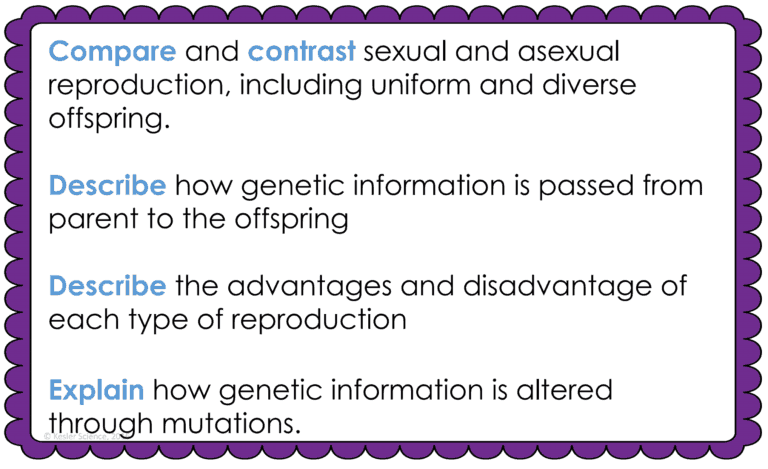
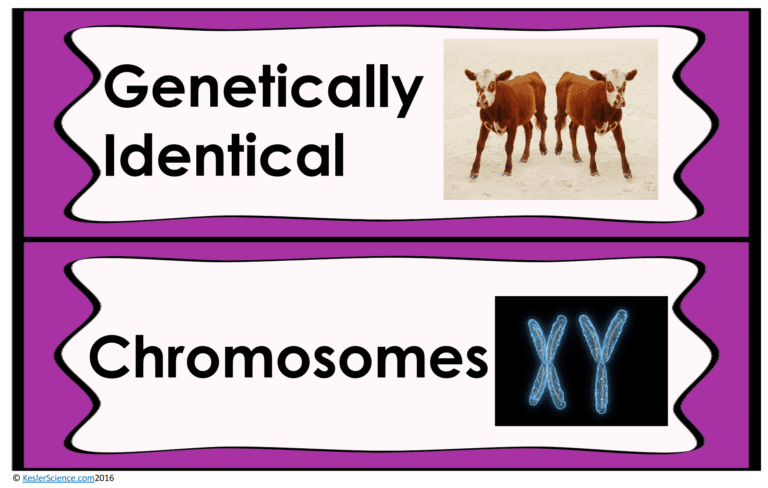
The teacher will help to clear any misconceptions about sexual and asexual reproduction. Students probably don’t understand how some plants and animals can reproduce both ways.
Estimated Class Time for the Engagement: 20-30 minutes
EXPLORATION
This student-centered station lab is set up so students can begin to explore asexual and sexual reproduction. Four of the stations are considered input stations where students are learning new information about asexual and sexual reproduction and four of the stations are output stations where students will be demonstrating their mastery of the input stations. Each of the stations is differentiated to challenge students using a different learning style. You can read more about how I set up the station labs here.
EXPLORE IT!
Students will be working in pairs to better understand asexual and sexual reproduction. Students will be comparing 3 organisms by reading a short description of each and how they reproduce. Students will classify whether they reproduce sexually or asexually or even both. Students will follow the steps and record their observations on their lab sheet.
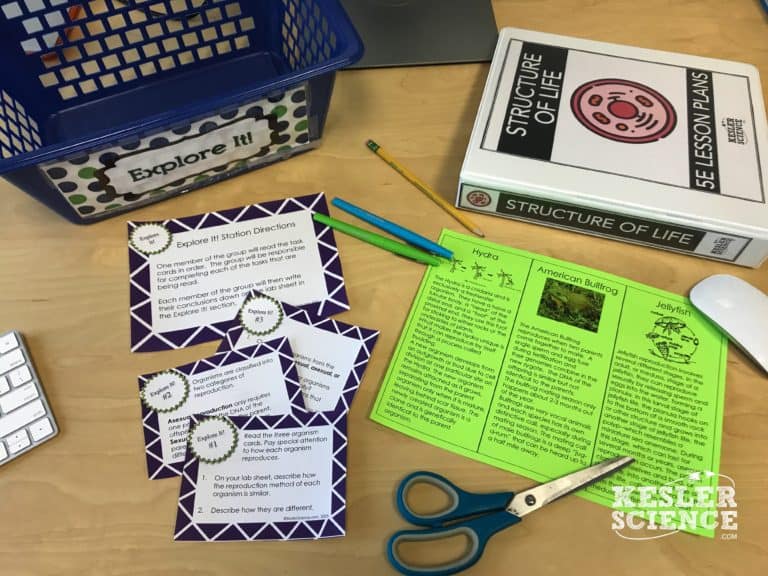
WATCH IT!
At this station, students will be watching a short video explaining two types of reproduction. Students will then answer questions related to the video and record their answers on their lab station sheet. For example: What is the difference between asexual and sexual reproduction? What are advantages of asexual reproduction? How does genetic variation allow humans to survive long-term? Which type of reproduction is responsible for genetic variation?
RESEARCH IT!
The research station will allow students to explore an interactive web page that allows students to research how certain animals, plants, and bacteria reproduce. Students will be instructed to complete a few tasks and record answers on their lab sheets.
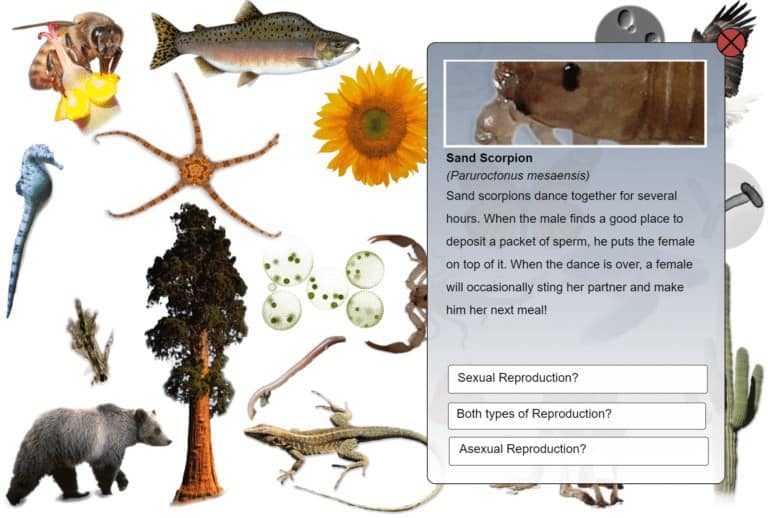
READ IT!
This station will provide students with a one page reading about the types of asexual reproduction. In the reading, students will understand binary fission, vegetative propagation, budding, and fragmentation. There are 4 follow-up questions that the students will answer to show reading comprehension of the subject.
ASSESS IT!
The assess it station is where students will go to prove mastery over the concepts they learned in the lab. The questions are set up in a standardized format with multiple choice answers. Some questions include: Which is not a characteristic of asexual reproduction? What type of reproduction do redwoods use? Which is not an advantage of sexual reproduction? Which statement is true about reproduction?
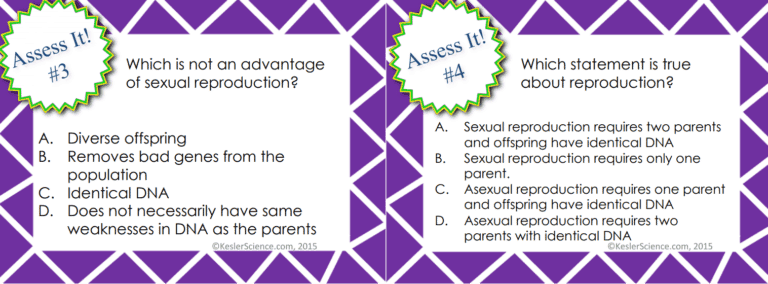
WRITE IT!
Students who can answer open-ended questions about the lab truly understand the concepts that are being taught. At this station, the students will be answering three task cards: Describe two disadvantages of asexual reproduction. Describe in detail one of the four types of asexual reproduction. Describe disadvantages of sexual reproduction.
ILLUSTRATE IT!
Your visual students will love this station. Students will draw six quick sketches of vocabulary words related to the topic of sexual and asexual reproduction. Keep in mind, students are instructed to keep ALL drawings appropriate to school settings.
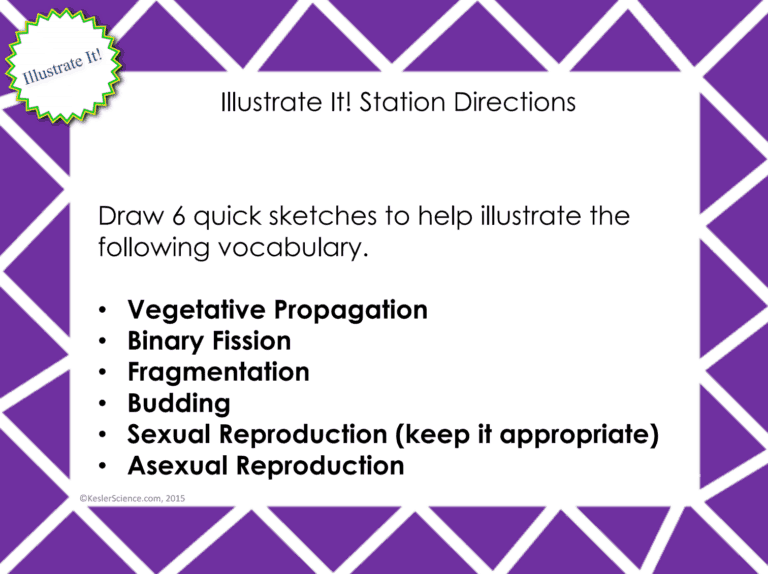
ORGANIZE IT!
The organize it station allows your students to look at a number of descriptions. Students will identify whether those descriptions are for asexual reproduction or for sexual reproduction. Once students have completed their organization, the teacher will come and check their understanding.
Estimated Class Time for the Exploration: 1-2, 45 minute class periods
EXPLANATION
The explanation activities will become much more engaging for the class once they have completed the exploration station lab. During the explanation piece, the teacher will be clearing up any misconceptions about asexual and sexual reproduction with an interactive PowerPoint, anchor charts, and notes. The asexual and sexual reproduction lesson includes a PowerPoint with activities scattered throughout to keep the students engaged.
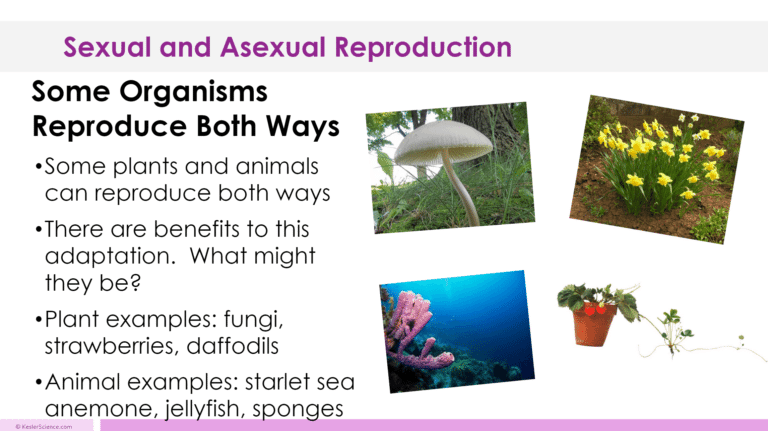
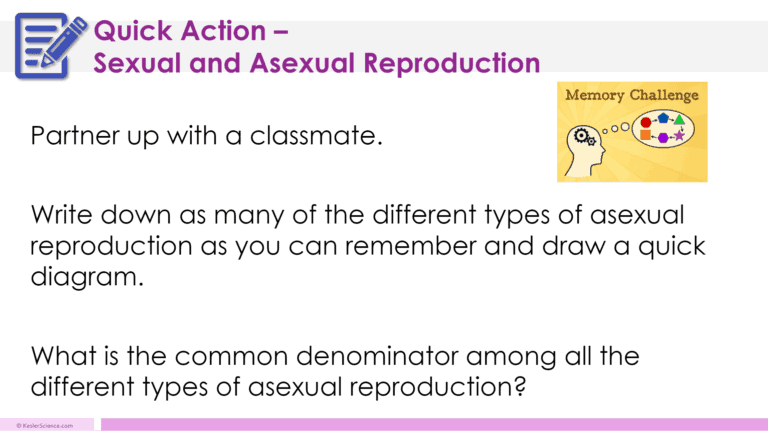
The students will also be interacting with their journals while taking notes from the PowerPoint. If you have students that need modified notes, the 5E lessons come equipped to help give every student access to the lesson.
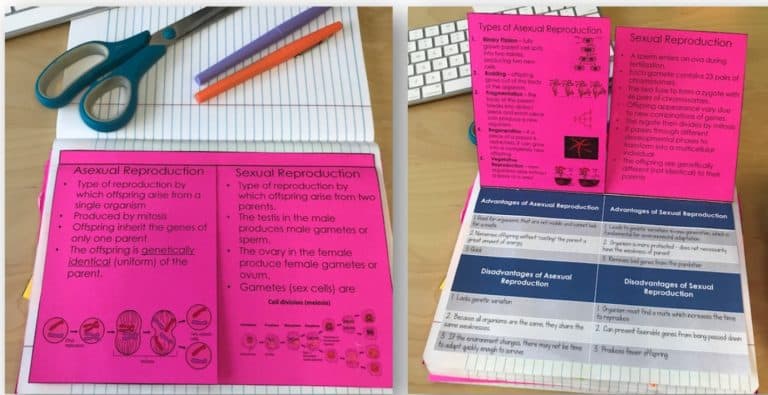
Estimated Class Time for the Exploration: 2-3, 45 minute class periods
ELABORATION
The elaboration section of the 5E method of instruction is intended to give students choice on how they can prove mastery of the concept. When students are given choice the ‘buy-in’ is much greater than when the teacher tells them the project they will have to create. The elaboration project will allow students to create a number of different project ideas ranging from researching mutations to comparing and contrasting offspring.
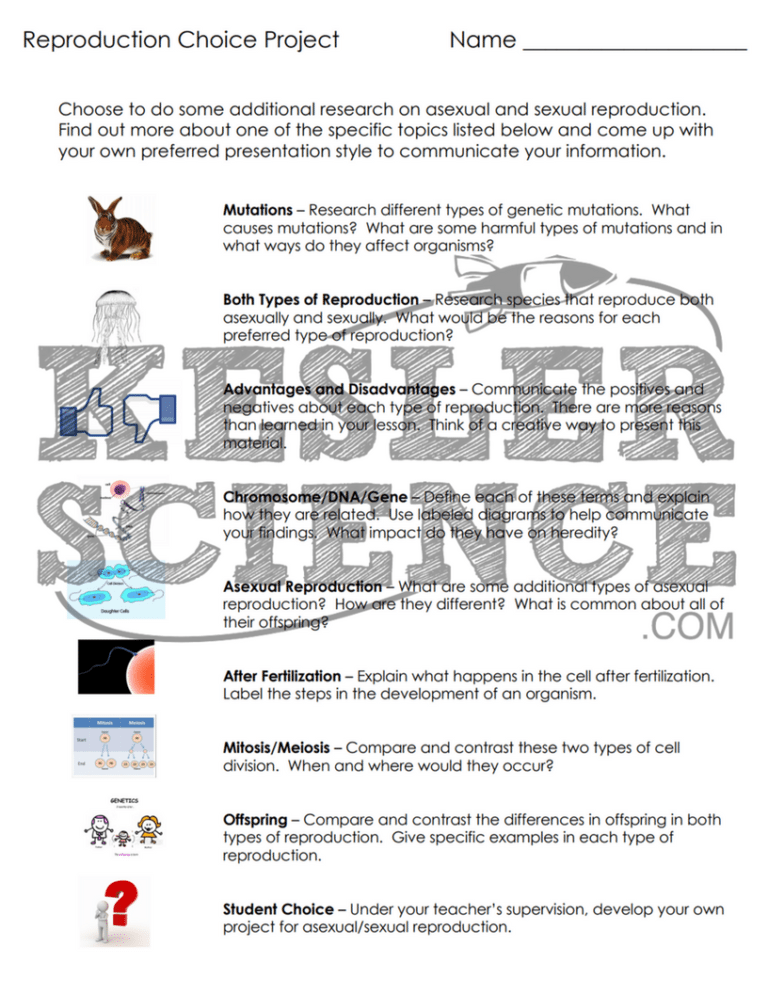
Estimated Class Time for the Elaboration: 2-3, 45 minute class periods (can also be used as an at-home project)
EVALUATION
The final piece of the 5E model is to evaluate student comprehension. Included in every 5E lesson is a homework assignment, assessment, and modified assessment. Research has shown that homework needs to be meaningful and applicable to real-world activities in order to be effective. When possible, I like to give open-ended assessments to truly gauge the student’s comprehension.
Estimated Class Time for the Elaboration: 1, 45 minute class period
DOWNLOAD THE FULL LESSON NOW
The full lesson is available for download from my TpT store. Save yourself a ton of time and grab it now.
Download Over $100 in FREE Resources
For Middle School Science
Simply create a login below and gain immediate access to a selection of our Kesler Science product line worth $100 - for FREE. There's a full version of every product type! You'll also join tens of thousands of middle school science teachers who receive timely tips and strategies straight to their inbox.


.png)



